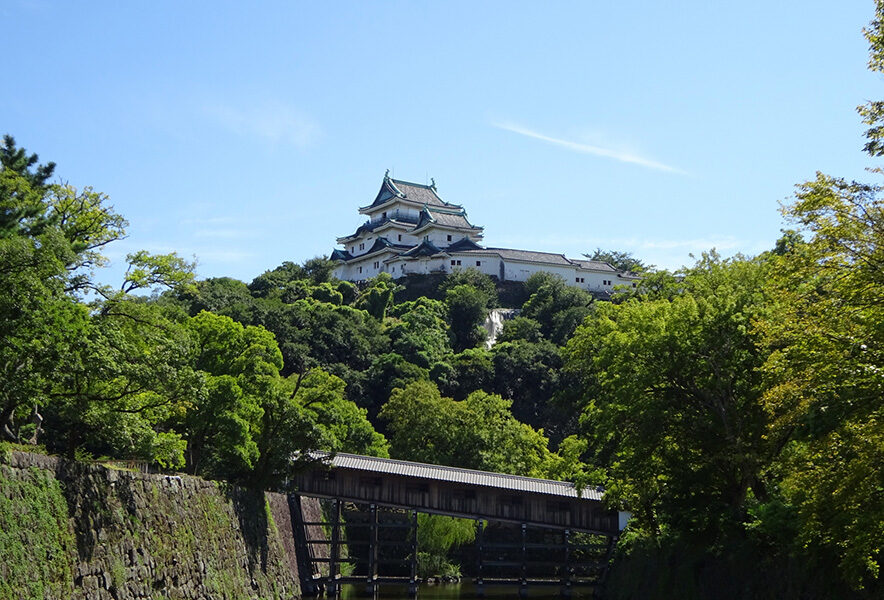- What kind of castle is Wakayama Castle? The name “Wakayama” was given by Hideyoshi Toyotomi
- During the Edo period, Wakayama Castle flourished as the residence of the “Kishu Tokugawa family.
- Let’s go see the Wakayama castle tower, one of the “Three Great Interconnecting Tenshukaku in Japan”!
- Wakayama Castle is not only a castle tower! Let’s look at the stonewalls and feel the history of the castle!
- Access to Wakayama Castle
- Parking around Wakayama Castle
- Wakayama Castle Official Website
- Recommended around Wakayama Castle
What kind of castle is Wakayama Castle? The name “Wakayama” was given by Hideyoshi Toyotomi
Wakayama Castle” is a flat mountain castle located in Wakayama City, Wakayama Prefecture, and now remains as a historic site in Wakayama Castle Park.
After Toyotomi Hideyoshi (Hashiba Hideyoshi at that time) conquered Kishu Province (present-day Wakayama Prefecture) in 1585, he ordered his younger brother Hidenaga to build the castle on Okayama (present-day Torabushiyama) at the mouth of the Kino River.
This castle was the foundation of the present Wakayama Castle.
After the castle was built, Shigeharu Kuwayama, a retainer of Hidenaga, came in as castle representative (deputy) and built the main castle, and Kazuharu Kuwano (Shigeharu’s grandson) entered the castle in 1596.
Incidentally, the name “Wakayama” is said to have been given by Hideyoshi by combining “Waka” from Wakaura, located south of the castle, and “Okayama” where the castle was built.
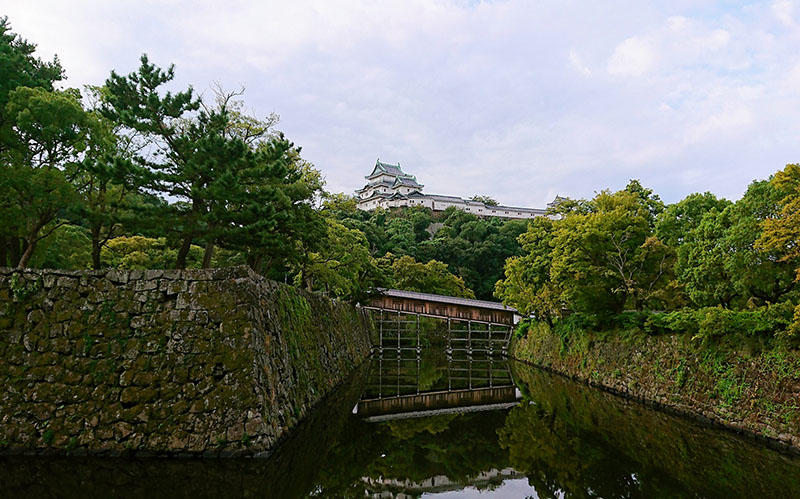
During the Edo period, Wakayama Castle flourished as the residence of the “Kishu Tokugawa family.
In the Edo period, the Kishu domain was established in Kishu Province, and “Wakayama Castle” became an important castle in Kishu Province, and was renovated and improved.
When Yorinobu Tokugawa (10th son of Ieyasu Tokugawa), the founder of the Kishu Tokugawa family, one of the three Tokugawa families, became the lord of the domain, large-scale renovations were made, including the construction of new Sunanomaru and Minaminomaru.
This major renovation of Wakayama Castle was so alarming to the shogunate that it was suspected of treason. The Kishu Tokugawa family also produced two shoguns, the 8th shogun, Yoshimune Tokugawa (whose works have been dramatized in numerous TV dramas, including “Rorenbo Shogun”), and the 14th shogun, Iemochi Tokugawa, who had a great influence on the shogunate administration.
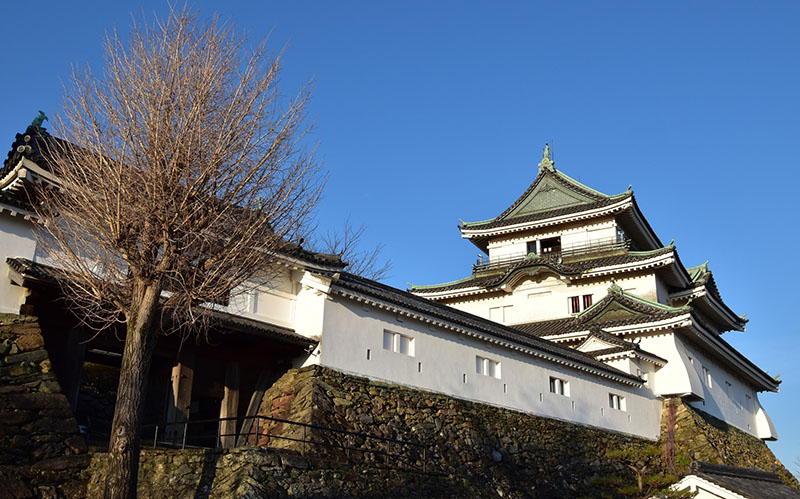
Let’s go see the Wakayama castle tower, one of the “Three Great Interconnecting Tenshukaku in Japan”!
Wakayama Castle is one of Japan’s three most famous interconnecting keepers, along with Himeji Castle (Hyogo Prefecture) and Matsuyama Castle (Ehime Prefecture).
In the “Chiritsu-shiki” style, the main keep is connected to the smaller keep and turrets by corridors, creating an inner courtyard when viewed from the sky.
The current keep, rebuilt in 1958 with reinforced concrete, is the third in the series; the first was built in 1600 or 1619 and was destroyed by lightning in 1846.
The second one was rebuilt in 1850 and designated a national treasure in 1935, but was destroyed by fire along with the tower and other structures in the Wakayama Air Raid of 1945.
The first castle tower was black, but was refurbished to white in 1789 during the reign of Harutomi Tokugawa, the 10th lord of the Tokugawa domain, and became the “white castle tower.
When it was rebuilt in 1958, the white color was used.
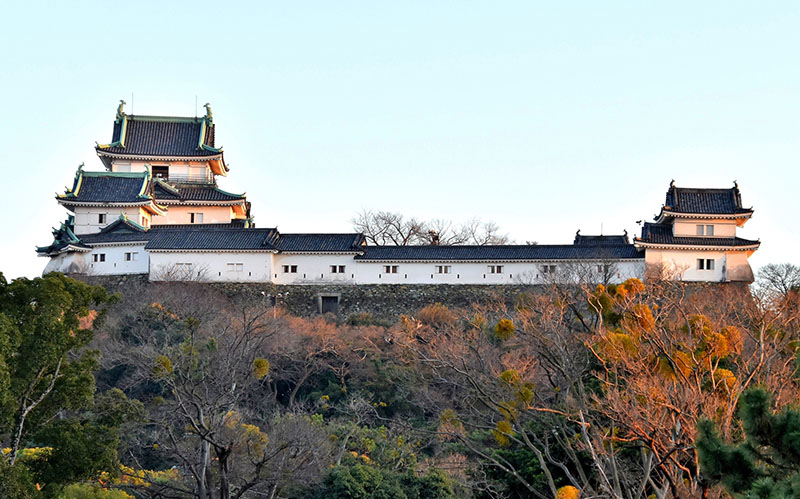
Wakayama Castle is not only a castle tower! Let’s look at the stonewalls and feel the history of the castle!
The stonewalls that support the castle keep and turrets are also a highlight of the castle.
The stonewalls of Wakayama Castle have different characteristics for the Toyotomi/Kuwayama period (1585-1600), the Asano period (1600-1619), and the Tokugawa period (1619-1869), and the stonewalls from the initial construction of the castle remain in good condition.
The area around the castle tower built during the Toyotomi and Kuwayama periods uses “Nosuzurazumi” (field masonry), the flat area built during the Asano period uses “Uchikomi-hagi” (hammered-in hagaki), and the west and south sides of the castle built during the Tokugawa period use “Kirikomi-hagi” (cut-in hagaki).
By looking at these stonewalls, you can feel the history of Wakayama Castle close at hand.
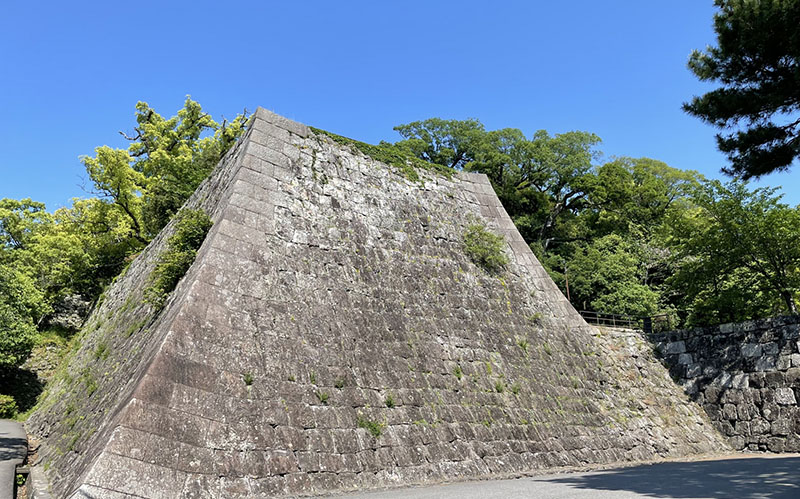
Access to Wakayama Castle
3 Ichibancho, Wakayama City, Wakayama Prefecture, 640-8146
Parking around Wakayama Castle
Wakayama Castle Official Website
Official site:http://wakayamajo.jp/index.html
